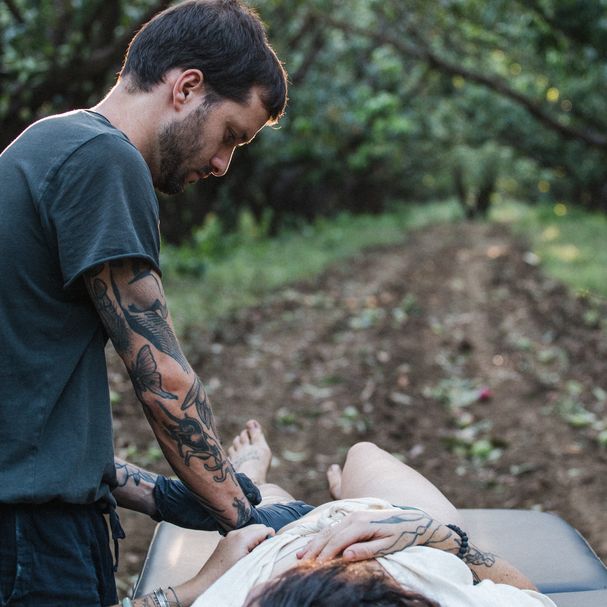Tattoos, Botany, and Connecting with Nature

In this artist feature, we caught up with the Botanical artist, Daniel the Gardener in London.
Botanical artist Daniel the Gardener aims to keep a conscious connection between people and the land on which they live. His design process delves into the stories and narratives held dear by his clients, where plants have meaning and significance. His freehand compositions bring a sense of inherent belonging, weaving his clients back into nature, while honoring their unique body type and morphology.
Research of flora, and the role it plays in its ecosystem, is one of Daniel’s primary interests. His private studio, created in collaboration with The Grow, is anything but a conventional tattoo space. All sorts of plants and trees embrace the space, flooded with natural light, an ongoing propagation station and soft instrumental music. It takes you away from the hustle and bustle of the city.
Every so often, Daniel gets the chance to work in a new environment for a special reason.
Nido Creativo was one of those times. Tattoodo sat down with him to learn more about this recent collaboration with environmentalists in the Costa Rican village of Nosara.
What was this project’s mission, and how did tattooing play a role?
I was lucky to be invited by the group Aprendamos for their Nido Creativo project, which was essentially an activist art residency in the heart of Costa Rica. It was an immersive study of native plants there, coupled with freehand tattooing in the open wilderness. All proceeds went to Finca Loroco, an indigenous-led NGO dedicated to preserving local seeds. I saw it also as a way to give back to the community there, to avoid the exploitation often associated with outsiders visiting such paradises.
What did your research entail?
I came to learn as much as I could, to be sure my designs respected and stayed true to the realities of the environment. I worked with botanist Ximena Obregon and horticulturist Osiris Lazo Romero to understand the life cycles of plants, medicinal uses, spiritual or ritualistic practices, and how local plants interact with each other to form the lush Costa Rican jungles.
How did that work then translate into tattooing, and what was the experience like for your clients?
Well, I’m not a scientific illustrator, so my work doesn’t try to replicate what I see. There’s a balance you strike when trying to honor how a plant really behaves, while also adding your own expressive interpretation. It’s sort of a mix of art and science. The more I deeply understand a plant, look at it from all angles, appreciate all stages of its life, then the more confidently I can tattoo it in my own voice.
With this project, I got a crash course on-site in one of the most beautiful places I’ve ever been. I got to invite my clients to this one of a kind adventure, to be tattooed in the middle of the jungle. All of my work is freehand, which also adds an extra layer of intimacy and collaboration with each person. For those tattoos to then have a positive environmental impact, to help preserve the region’s biodiversity, it was a really powerful experience.
You also collaborated with photographers to document the freehand design process. Was there a reason you chose to focus on sketches, rather than final tattoos?
We wanted to explore the possibilities of just drawing on the body as a way of expression, without the need to become a tattoo. We did several photoshoots of people immersed in landscapes, adorned with freehand sketches of bodysuits. Photographers Inés Prelovsek and Charles Blouin are so talented, and lovely to work with. This is something I will keep doing with other photographers in the future. I imagine the photo series will become another little universe within my practice.
Do you also have plans to work on tattoo projects similar to Nido Creativo in the future?
Absolutely, though each project may take a different form. Working in remote spaces requires a lot of resources, labor and a bit of luck. So I might also see what’s also possible in cities around the world, to work with horticulturalists or botanists in academic spaces, botanical gardens, greenhouses, etc. Even when it’s just myself and a client in my private studio, the goal is the same. I want my tattoos to be living representations of the interconnected relationship between humanity and the natural world. Especially in cities, surrounded by concrete, it’s so important to remember that we are part of nature, never separate from it.







